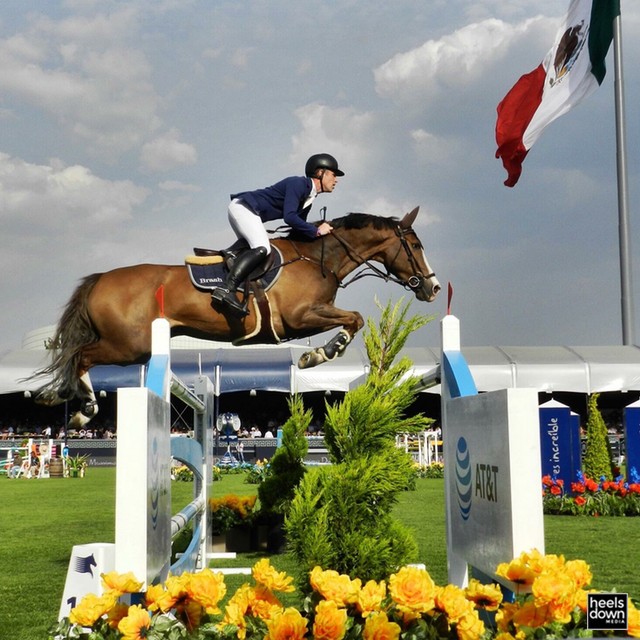Quicker, Sharper, Stronger: Build a Show Jumping Machine with Dressage

American Olympic dressage rider and popular clinician, Christine Traurig, has an insightful and unique way of explaining concepts of flatwork to jumper riders – and with her involvement in the George Morris Horsemastership Clinics, she’s here to prove that flatwork can shave off the seconds in the show jumping arena.
Here are a few of her cross-discipline commandments for jumper riders to incorporate in their schooling:
The Ingredients That Will Win the Jump-off
The rideability…will enable you all to make your horse quicker and more responsive, and prompt to the aids when it comes down to executing the technicalities of the course. The more athletically developed your horse is, the more promptly he can respond because he knows how to handle his body. Eighty percent of the flatwork is spent gymnasticizing, conditioning, strengthening, carrying and pushing power, and posture….
The quickest horse in the turn in the jump-off is the one that promptly responds to transition-giving aids but is also the ones that after the jump, is so light on the forehand, that it can get the forehand as quickly as possible in the new direction.
If a horse is engaged enough, and it can bounce itself onto its hindquarters quickly, the more maneuverable that horse is.
Contact Starts at the Shoulder
It’s not just from your fingers to the bit…Contact starts in your shoulder. The shoulder allows the following, the elbow then allows the following, the wrist allows the following. Be very sensitive to feeling how the horse chews on the bit. I always say that the ring finger is the thermometer to the horse’s mouth.
The Ideal Canter
The canter has to feel like you’re jumping the biggest oxer in Aachen, the horse gives you its topline, brings the wither up, uses his back and can flips his hind end because the horse is supple in his topline longitudinally. That’s what you’re looking for in the canter. Often you hear that the jump is just an exaggerated canter stride – the feeling of the horse daring to bring his wither up to you, using his back, using his neck. And then trust the contact.

